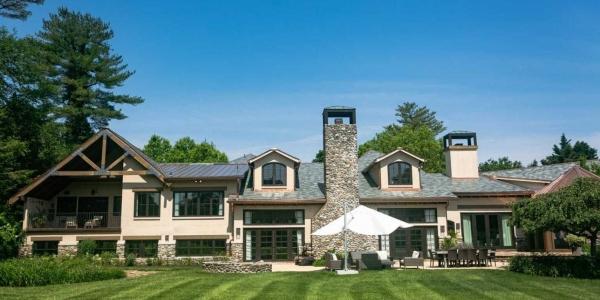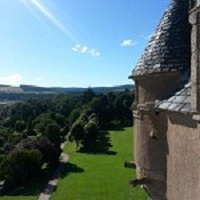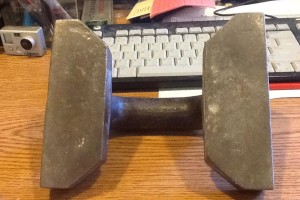From gable to mansard: A comprehensive guide to popular roof styles
January 5, 2025 at 6:00 a.m.By The Durable Slate Company.
The roof over your head does more than just keep out the rain, discover the characteristics and benefits of these common roof styles.
Architectural choices not only shape the aesthetic of buildings but also influence their resilience against the elements. Whether it's the wind-defying stability of a hip roof or the space-maximizing design of a mansard, the type of roof you choose can transform a structure’s durability, energy efficiency and even its personality. Explore the diverse world of roofs and what makes each one uniquely essential with us here at The Durable Slate Company.
Gable roof
A gable roof is a triangular roof with two sloping sides that meet at a peak. It is a very common roofing style and can be found on many different types of buildings, including houses, churches and other structures. One of the main benefits of a gable roof is that it is relatively simple to build and provides a good amount of ventilation and light. It is also able to shed water and snow efficiently, making it a practical choice in many different climates. However, gable roofs can be prone to wind damage if they are not properly anchored to the building's walls and they may not provide as much insulation as some other types of roofs.
Hip roof
A hip roof has four sloping sides, with all sides meeting at a central ridge. It is a strong and stable roofing design that is commonly used on houses, schools and other buildings. One of the main benefits of a hip roof is that it is able to withstand strong winds and heavy snow loads, making it a good choice in areas with harsh weather. A hip roof also has a more complex and sophisticated appearance than some other roofing styles, which can add to the overall aesthetic of a building.
Flat roof
A flat roof is completely level, without any slopes or pitches. Flat roofs are commonly found on commercial buildings, apartment buildings and some houses, particularly in modern or contemporary styles. One of the main benefits of a flat roof is that it is relatively simple and inexpensive to build, especially compared to pitched roofs that require a framework of rafters and trusses. Flat roofs can also be used as a platform for additional features, such as green roofs, solar panels or outdoor living spaces. However, flat roofs do have some drawbacks, including the fact that they do not provide as much insulation as pitched roofs and are more prone to water damage if they are not properly maintained.
Mansard roof
A mansard roof has two slopes on each of its four sides, with the lower slope being much steeper than the upper one. The shape of the roof creates additional living or storage space in the attic or upper level of the building. Mansard roofs are often used on houses and other buildings with a traditional or historic appearance. One of the main benefits of a mansard roof is that it allows for a lot of usable space in the attic, which can be particularly useful in areas where land is expensive or scarce. However, mansard roofs can be more expensive to build and maintain than some other types of roofs and they may require specialized skills to construct.
Gambrel roof
A gambrel roof has two slopes on each side, with the lower slope being steeper than the upper one. The shape of the roof is similar to that of a barn roof and it is often used on buildings with a rustic or traditional appearance. One of the main benefits of a gambrel roof is that it allows for more headroom and usable space in the attic or upper level of a building. This makes it a popular choice for homes, barns and other structures where additional living or storage space is desired. Gambrel roofs are also more resistant to strong winds and heavy snow loads than some other types of roofs.
Butterfly roof
A butterfly roof has two slopes that meet at a central valley, creating a butterfly-like shape. It is a distinctive and modern-looking roofing style that is often used on houses and other buildings with a contemporary design. One of the main benefits of a butterfly roof is that it allows for natural light to enter the building through the central valley, which can help to reduce the need for artificial lighting. Butterfly roofs can also be used to collect rainwater for reuse, which can be an environmentally-friendly feature.
Sawtooth roof
A sawtooth roof has a series of triangular sections, with each section alternating between a steeper and a shallower slope. The design of the roof allows for natural light to enter the building through the triangular sections. Sawtooth roofs are often used on industrial or commercial buildings, such as factories or warehouses, where the need for natural light is particularly important. One of the main benefits of a sawtooth roof is that it allows for a lot of natural light to enter the building, which can help to reduce the need for artificial lighting.
Saltbox roof
A saltbox roof has a long, sloping backside and a shorter front side, creating a saltbox shape. It is a common roofing style on houses and other buildings with a traditional or colonial appearance. One of the main benefits of a saltbox roof is that it allows for additional living or storage space in the attic or upper level of the building, as the slope of the roof creates a high ceiling in that area. Saltbox roofs are also relatively simple to build and can be more cost-effective than some other types of roofs. However, saltbox roofs can be prone to water and snow damage if they are not properly maintained and they may not provide as much insulation as some other types of roofs.
Shed roof
A shed roof has a single, sloping surface. It is typically used on smaller structures, such as sheds or as an addition to a larger building. One of the main benefits of a shed roof is that it is relatively simple and inexpensive to build, as it does not require the same type of framing as a pitched roof. Shed roofs can also be used to create a modern or minimalist appearance and they allow for natural light to enter the building through windows on the sloping surface. However, shed roofs may not be as durable or long-lasting as some other types of roofs and they may not provide as much insulation or protection from the elements.
Original article and photo source: The Durable Slate Company
Learn more about The Durable Slate Company in their Coffee Shop Directory or visit www.durableslate.com.











Comments
Leave a Reply
Have an account? Login to leave a comment!
Sign In